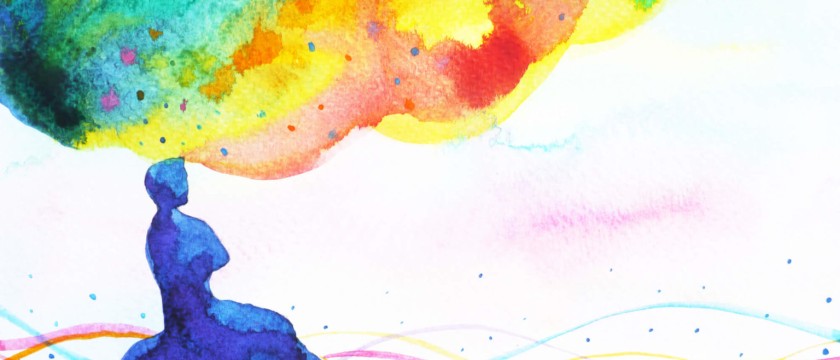 Sep 12,2019
Sep 12,2019
by : Sekhar
Department of Developmental Therapy
Visual Journaling: Health Promotion through Art and Drawing
WHAT IS VISUAL JOURNALING?
Visual journaling [also called art or drawing journaling] has been identified as both an important and accessible approach in expressive arts therapy, counseling, and education. It is not only an effective method for stress reduction, but also is considered a creative way to express personal narratives and life stories as well as make meaning through images, creative writing, and story sharing.
WHY COMBINE IMAGES WITH WORDS?
In a comparative study on the efficacy of art and writing therapy on stress reduction, Pizarro (2004) noted that the combined effects of art therapy and writing demonstrated more significant positive changes in terms of perceived levels of stress than writing alone.
HISTORY OF VISUAL JOURNALING
Visual records of thoughts and daily life have been maintained throughout history. Petroglyphs (rock carvings) and pictographs (rock paintings) are the oldest forms of symbolic language representing complex cultural meanings often layered over time. Japanese 10th century “pillow books” were private written and visual journals (collection) depicting personal thoughts, feelings, and reflections about court life (Kasahara, 2017). Indigenous methods of recording historical events are also typified in the Lakota Winter Counts: a storyteller creates a pictograph for every year (snowfall to snowfall) on hide or cloth (Atka Lakota Museum & Cultural Center, n.d.).
BENEFITS OF VISUAL JOURNALING
There are a number of proven health benefits correlated with visual journaling or artmaking. For instance, engaging in brief artmaking has been shown to enhance immunity and decrease cortisol levels (Lorance & Warson, 2012; Hayes et al., unpublished raw data). Although, many of these benefits can be transferred to the effects of the visual journaling process, research on the specific effects of visual journaling demonstrated a decrease in anxiety levels and negative affect (Mercer et al., 2010).
In a 2012 study with southeastern tribal elders, visual journaling was sustained over a two-month period with a 95% response rate among 26 participants (Warson, 2012). Preliminary data analysis indicated a preference for depicting every-day life events such as picking peas in the garden, designing quilt patterns, as well as references to family and spirituality. These preliminary findings suggest that mindfulness-based awareness was evident in the re-experiencing of important daily tasks and events. As a result, there is growing evidence for visual journaling as a promising intervention for stress reduction.
GUIDELINES FOR VISUAL JOURNALING
For maximum benefit, choose a consistent time of day to work in your journal. Keep a small container of favorite art supplies close by in addition to a small travel case. Health benefits such as increased dopamine and serotonin production can be achieved after five minutes of sustained visual journaling (Zaidel, 2014).
Research on visual journaling has demonstrated that a self-directed approach is just as beneficial as using specific prompts (Mercer et al., 2010). Create your own approach and vary it as your awareness grows. For example, visual journaling process over a period of time can elicit new themes as broad as your depiction of wellness. Mindfulness-based practices are also a natural fit with visual journaling.
Suggested visual journaling exercises
Create a symbol of how you feel in the present moment and write one word to describe this feeling.
Create a symbol of your day and write one word to describe your day.
If you are having a not so good day, draw or trace a circle. Using lines, shapes, and colors create a symbol of this feeling in the circle. Write down words that describe this feeling. You can take this drawing out of your journal if you choose to.
Create a drawing of your favorite place. Share this place with someone.
Create a symbol of tension and write down a word to describe this state of being. Starting at your feet, focus on tensing up each muscle and then releasing it. Do this until you reach the top of your head.
Create a symbol of relaxation and write down a word to describe this state of being.
Create a circle of wellness. Draw or trace your circle and divide your circle into 4 sections and include symbols of physical, emotional, spiritual, and mental activities. Label each activity and share your wellness circle with someone.
Create a circle of family and friends. Draw or trace a circle. Paste copies of pictures (or magazine images) of family and friends (past and present) who have been a source of support. Be sure to include a picture of you. Share stories about each person.
Create your own approach and have fun!
